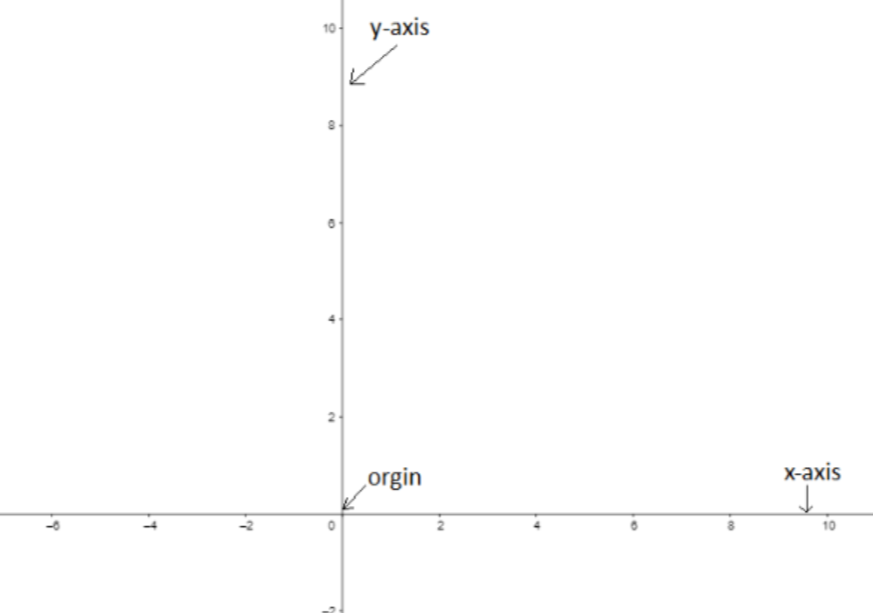
To find the coordinate of origin
$\begin{align}
& \text{a) (0,1)} \\
& \text{b) (1,0)} \\
& \text{c) (0,0)} \\
& \text{d) (1,1)} \\
\end{align}$
Answer
576.3k+ views
Hint: Now origin is the intersection of x and y-axis. It is the reference point of any graph. The origin is the reference point of the graph. Each point on the x-axis, y-axis, and anywhere in the x-y plane is in reference to an origin. Hence basically any point on the graph is in reference to the origin.
The Origin is the center of any graph and is the intersection point of the axis.
Complete step-by-step solution:
Now the equation of x-axis is y = 0. And the equation of the y-axis is x = 0. Hence the point of intersection of the two-axis will be
x = 0 and y = 0 hence the coordinate of this point will be (0, 0).
Hence, the coordinate of origin is (0, 0).
Hence, option c is the correct option.

Note: Since the origin is a reference point it will always be (0, 0). At any point which is represented as (a, 0) where ‘a’ arbitrary is any number will lie on the x-axis but not on the y-axis. Similarly, any point (0, b) where b is an arbitrary number will lie on the y-axis but not the x-axis. Also, any point (a, b) where a is an arbitrary number, as well as b, is an arbitrary number will not lie on the x-axis as well as the y-axis. Hence the intersection of the axis will have to be (0, 0).
The Origin is the center of any graph and is the intersection point of the axis.
Complete step-by-step solution:
Now the equation of x-axis is y = 0. And the equation of the y-axis is x = 0. Hence the point of intersection of the two-axis will be
x = 0 and y = 0 hence the coordinate of this point will be (0, 0).
Hence, the coordinate of origin is (0, 0).
Hence, option c is the correct option.

Note: Since the origin is a reference point it will always be (0, 0). At any point which is represented as (a, 0) where ‘a’ arbitrary is any number will lie on the x-axis but not on the y-axis. Similarly, any point (0, b) where b is an arbitrary number will lie on the y-axis but not the x-axis. Also, any point (a, b) where a is an arbitrary number, as well as b, is an arbitrary number will not lie on the x-axis as well as the y-axis. Hence the intersection of the axis will have to be (0, 0).
Recently Updated Pages
Master Class 9 Social Science: Engaging Questions & Answers for Success

Master Class 9 Science: Engaging Questions & Answers for Success

Master Class 9 English: Engaging Questions & Answers for Success

Master Class 9 Maths: Engaging Questions & Answers for Success

Master Class 9 General Knowledge: Engaging Questions & Answers for Success

Class 9 Question and Answer - Your Ultimate Solutions Guide

Trending doubts
Which places in India experience sunrise first and class 9 social science CBSE

Fill the blanks with the suitable prepositions 1 The class 9 english CBSE

Write the 6 fundamental rights of India and explain in detail

Difference Between Plant Cell and Animal Cell

What is pollution? How many types of pollution? Define it

What is the Full Form of ISI and RAW




